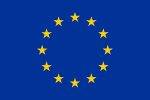Community building
The community building service is fundamental to connecting DIH partners (e.g., technology and service providers, end users (private and public sector), investors and competence centres) in the region to relevant actors within the value chain both within and outside the region. It is also important to create awareness of the potential in I&M robotics and to establish thriving ecosystems at regional, national and international level. This is to support relevant DIH partners (e.g., SMEs) in delivering their services and technologies regionally, nationally and internationally. A DIH in the RIMA network can use the network to help the organizations in its ecosystem to reach to potential customers and collaborators outside its region. In the figure below, we outline key aspects of community building. In the figure, we include collaborations with European and international organizations and stakeholders, as technology and service suppliers within I&M robotics may often benefit from also targeting markets outside their region and country.

Key aspects of what community building encompasses. Other regions include both national, European and international geographical coverage. Moreover, industrial associations can also be national, European and international.
DIHs can carry out several activities to achieve community building, such as:
- Disseminating results and possibilities within the network using e.g. Social and conventional media (feature articles, TV appearances, videos, etc.), presentations at trade fairs and conferences, newsletters, direct personal contact. Such dissemination can be used to provide information about I&M robotics success stories and market opportunities.
- Arrange conferences and workshops where participants connect and share experiences.
- One-to-one follow-up with relevant organizations (e.g. SMEs, asset owners) to concretize opportunities for innovation and value creation.
- Provide an overview of relevant industrial associations and assist in connecting with them.
There is generally one (or a few) organization(s) within the DIH that has the main responsibility for coordination of the DIH and this organization also acts as an enabler and establishes a strong network within the region. This organization arranges workshops and business events that facilitate networking and sharing knowledge and experience. This key organization also connects to other organizations outside the DIH ecosystem to collaborate where appropriate e.g. to organise a major event such as a national conference on I&M robotics. These other organizations can include national and international organizations within I&M and/or robotics. It is beneficial to share a list of attendees with the participants to facilitate communication – possibly even before the event. In all cases, GDPR needs to be handled properly. For some events it can be beneficial if participants have the opportunity to schedule short one-to-one meetings during the event beforehand. Such meetings can be an efficient approach to determine whether the participants should engage in further dialog regarding a potential collaboration.
From the available information it seems that investors rarely participate in the community building. There can be advantages to DIHs being more active in trying to mobilize investors.
In terms of how to achieve sustainability, events organized in connection with community building may be economically sustained by charging fees to the participants and getting financial help from other organizations e.g. municipalities which are interested in the industrial development of specific areas.

Example: SINTEF has organized I&M robotics innovation workshops as part of a Norwegian network on I&M robotics called RINVE. The workshop was organized in collaboration with the Norwegian Society of Maintenance and a national unmanned aerial vehicle organization (UAS Norway). The purpose of the innovation workshops has been to connect suppliers and end users within I&M robotics and the workshops have gotten very positive feedback from the participants. The workshops have been multi-domain with focus on I&M robotics in transportation (rail, road, aviation) and petroleum (subsea and topside). The program for the workshops has generally been divided as follows:
- End-users share concrete needs within their industry
- Suppliers (typically SMEs) give 3-minute pitches about their offerings
- Short presentations on funding opportunities (e.g., EU, national, regional)
- An interactive break-out session where end-users and suppliers discuss concrete opportunities for collaboration.


